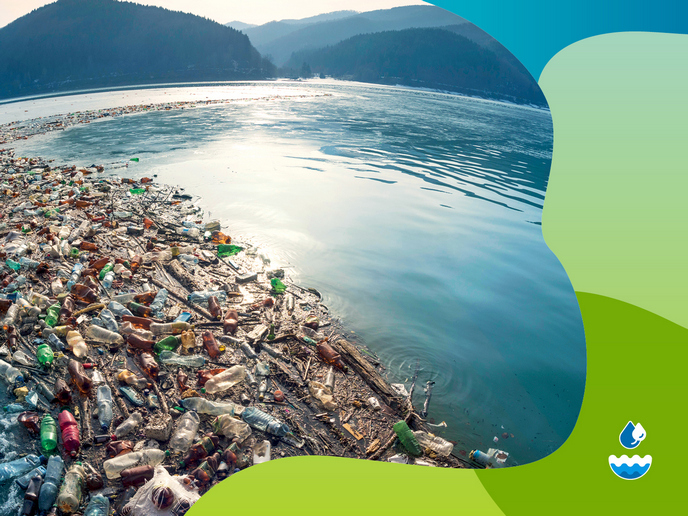Tackling marine litter from source to sea
Marine litter can be found on our coastlines as well as far out at sea, thousands of kilometres from land, at the bottom of the deepest ocean trenches, and even in the polar regions among the sea ice. Marine life can be harmed if they ingest marine litter, become entangled in it or are exposed to other pollutants transported by litter, while the impacts of exposure on human health are not yet fully understood. Marine litter is defined as all human-made solid items that end up in the coastal or marine environment. Plastics, including bags, bottles, and discarded fishing gear, form the largest, most harmful and persistent fraction of marine litter. Each year an estimated 19-23 million tonnes enter aquatic environments, and this volume is expected to increase to 54 million tonnes until 2030 unless urgent action is taken. Over time, plastic waste is weathered and breaks down into tiny fragments – with those measuring less than 5 millimetres in diameter defined as microplastics. Nanoplastics are smaller still, with a diameter of less than one thousandth of a millimetre. Microplastics and nanoplastics pose a global threat to the environment and to human health. While the impacts are not yet fully known, microplastics and nanoplastics as well the additives they contain and pollutants that sorb to these particles affect marine organisms and ecosystems. Innovative strategies and tools are therefore needed to tackle this challenge. The goal of the EU Mission: Restore our Ocean and Waters by 2030 is to reduce plastic litter at sea by at least 50 % and cut microplastics released into the environment by 30 %, in line with the EU Zero Pollution Action Plan. By developing, demonstrating and deploying innovative solutions, the Mission will help to prevent and eliminate pollution and protect and restore aquatic ecosystems and biodiversity. The Marine Strategy Framework Directive aims at achieving 'good environmental status' of the seas, where marine litter no longer harms the environment. In addition, the 2030 EU Biodiversity Strategy, which forms a core part of the European Green Deal, aims to restore ocean health. The target is to protect 30 % of the EU’ seas by 2030, including 10 % under strict protection. To meet these challenges, EU-funded researchers are investigating how plastics are transported to the ocean, sustainable biodegradable alternatives for plastic packaging, enhanced waste and wastewater management, and innovative solutions for monitoring, collecting and degrading plastics.
A plastic-free ocean
This new CORDIS Results Pack presents 12 EU-funded Horizon research projects that are helping to reduce the impact of marine litter through prevention, elimination, mitigation and monitoring, from source to sea. The Pack showcases their potential for exploitation, scale-up, replication and uptake by different stakeholders responsible for implementing measures to reduce pollution at the local and regional levels. The results will contribute to the EU’s goal of cutting plastic pollution to levels no longer considered harmful to health and natural ecosystems, respecting the boundaries within which our planet can cope, thus creating a toxic-free environment.
EU research shows the way
The LimnoPlast and PlasticPiratesEU projects collected data together with youth and citizens on plastic pollution in rivers and coasts across Europe to prevent it entering the ocean. EUROqCHARM validated methods and reference materials and harmonised protocols to monitor and combat plastic pollution. MONPLAS trained early-stage researchers in the development of technologies for detecting microplastics and the effect on human health and the environment. B4PNow developed a water-soluble fully bio-based material as an alternative to plastic for household applications. EcoFLEXY designed a fully compostable biomaterial for packaging made from cellulose produced by bacteria, which can replace plastic. VORTEX identified specific microorganisms capable of breaking down different types of plastic. The LEON-T project modelled the dispersion and environmental fate of microplastic emissions from tyres and developed new tyres to reduce emissions. Glaukos and SEALIVE created new biodegradable and compostable materials with faster biodegradation rates for use in fishing nets and crates, and clothing. Finally, In-No-Plastic developed cleanup tools for removing plastics from the marine environment and industrial waters, and SeaClear developed autonomous robots for underwater litter collection.



